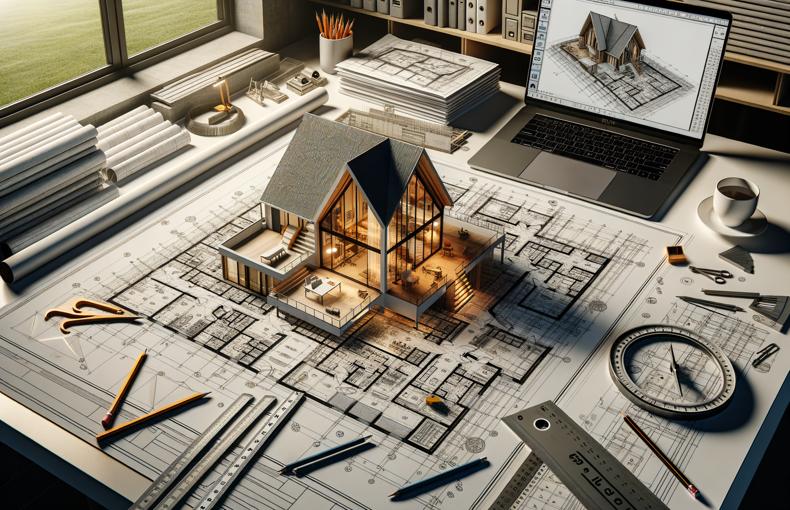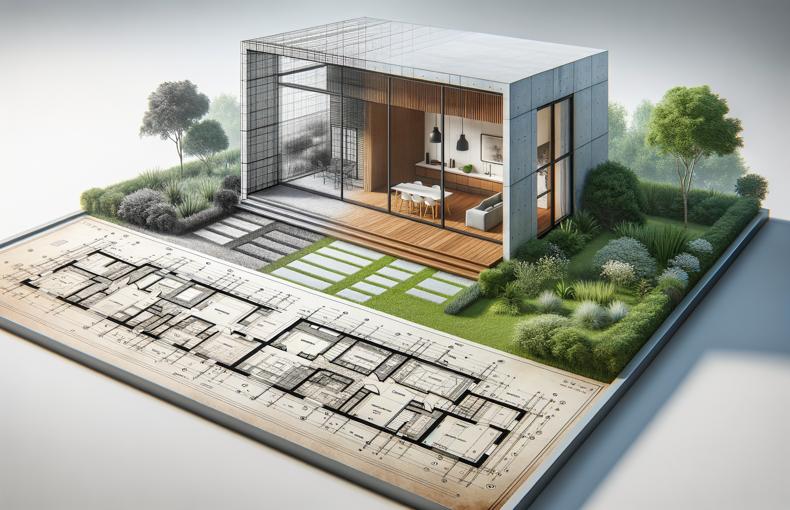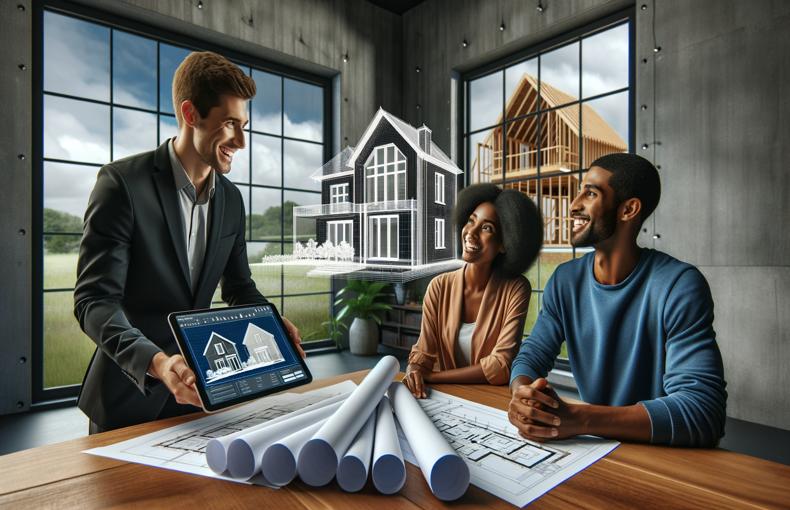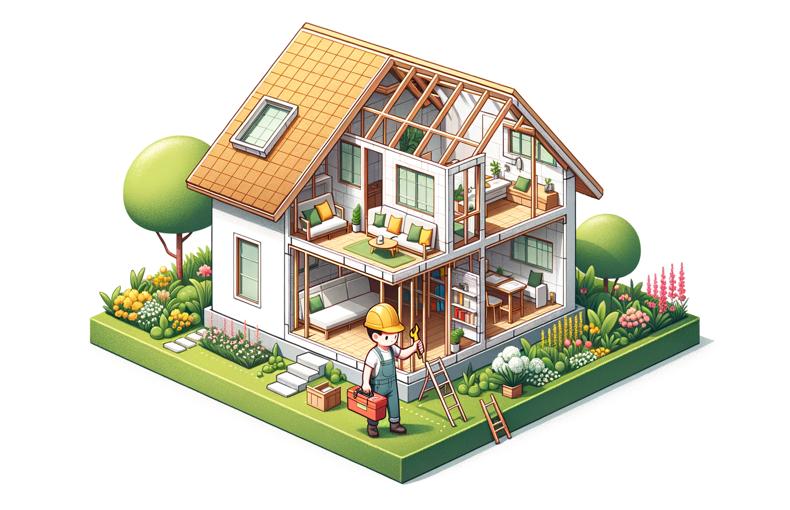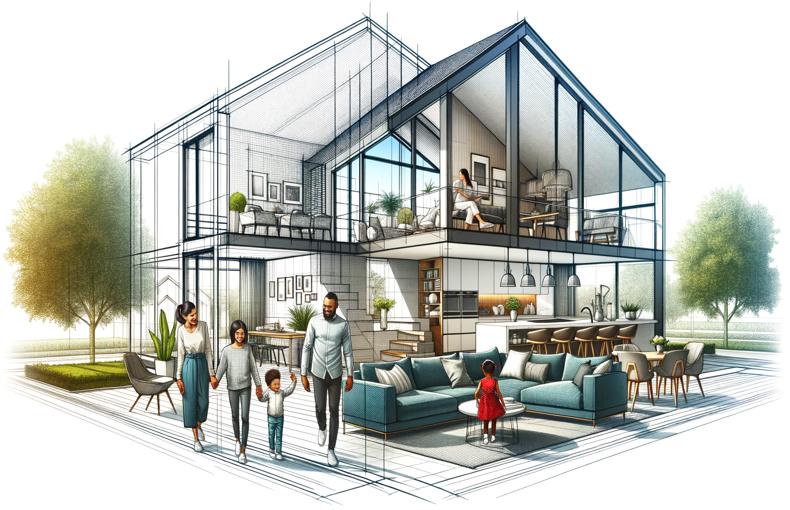The Importance of Architectural Drafting in Modern Home Design
Architectural drafting is the backbone of modern home design. While many people focus on the aesthetics or the finished product, it’s the careful planning, precision, and technical expertise behind the scenes that make a home truly functional and beautiful. In this blog post, we’ll delve into the importance of architectural drafting, explaining how it impacts the design process and why it’s an essential step in turning ideas into reality.
What Is Architectural Drafting?
At its core, architectural drafting is the process of creating detailed technical drawings and plans used for the construction of buildings. These drawings include everything from the overall layout of the house to the specific placement of windows, doors, and electrical outlets. Drafts ensure that every aspect of the building is well-planned and adheres to local codes and regulations.
Modern architectural drafting often combines traditional hand-drawing techniques with advanced computer software such as AutoCAD, Revit, and SketchUp, which help drafters create highly detailed and accurate renderings. These tools allow for 2D blueprints and 3D models, giving clients a clear visualization of the final structure.
Why Is Architectural Drafting Crucial in Modern Home Design?
1. Precision and Accuracy
Architectural drafting ensures precision and accuracy in design, which is essential for creating a structure that is both functional and aesthetically pleasing. Even the smallest measurement error can lead to significant problems down the line, from structural integrity issues to costly rework. Detailed blueprints allow builders to follow exact specifications, reducing the risk of errors during construction.
2. Effective Communication Between Stakeholders
A well-drafted architectural plan is a universal language between architects, engineers, builders, and homeowners. It bridges the communication gap, ensuring that everyone involved in the project understands the design intent. These detailed drawings serve as a roadmap, guiding the entire construction process and ensuring that everyone is on the same page. Miscommunication is one of the leading causes of construction delays and cost overruns, and architectural drafting helps prevent these issues.
3. Compliance with Building Codes and Regulations
One of the most critical aspects of architectural drafting is ensuring that the design adheres to local building codes and regulations. Without careful drafting, a home may fail to meet required safety standards, leading to delays or even legal issues. Professional drafters understand these codes and incorporate them into the design from the start, ensuring that the home passes all necessary inspections and permitting processes.
4. Customization and Personalization
Modern homeowners are increasingly looking for unique, custom homes that reflect their personal style and needs. Architectural drafting allows for a high degree of customization, enabling homeowners to create a space that is tailored specifically to their lifestyle. Whether it’s an open-concept living area, a specialized home office, or a luxurious master suite, architectural drafting translates these ideas into a practical, buildable plan.
5. Integration of Modern Technologies
As homes become more technologically advanced, integrating smart systems, energy-efficient designs, and sustainable materials is a growing priority for many homeowners. Architectural drafting plays a pivotal role in ensuring that modern technologies are seamlessly incorporated into the design. From solar panel placement to smart home wiring, drafters work to future-proof homes by planning for the latest innovations.
6. Cost Efficiency and Budget Control
Careful planning in the drafting stage can help prevent unexpected expenses during the construction process. Architectural drafting gives builders and homeowners a clear understanding of material requirements, labor needs, and overall project costs. By identifying potential issues early on, drafters can adjust plans before construction begins, saving time and money. Additionally, having a precise blueprint helps contractors provide more accurate estimates, reducing the likelihood of budget overruns.
The Role of Architectural Drafters in the Design Process
Architectural drafters collaborate closely with architects, engineers, and clients to create comprehensive design plans. While an architect may develop the conceptual design and overall vision for a home, it’s the drafter who translates that vision into practical, workable drawings. They focus on the technical details, ensuring the design is not only beautiful but also functional and buildable.
In modern home design, drafters are also instrumental in creating 3D models and virtual renderings, which allow clients to "walk through" their future homes before construction even begins. This is a powerful tool for homeowners, as it provides a clear understanding of how the finished space will look and feel, allowing for adjustments and refinements early in the design process.
How Architectural Drafting Has Evolved with Technology
The evolution of technology has transformed the field of architectural drafting, making it more efficient, accurate, and accessible. Computer-Aided Design (CAD) software allows drafters to create highly detailed plans with precision that would have been difficult to achieve by hand. The introduction of Building Information Modeling (BIM) has further enhanced the process by enabling architects and drafters to create detailed, data-rich models that can be shared among all parties involved in a project.
3D rendering software like SketchUp and Revit has also revolutionized the way drafters work. These programs allow for real-time visualization, helping clients and builders see how the design will look once constructed. This not only improves communication but also speeds up the design and revision process.
The Future of Architectural Drafting
As the construction industry continues to embrace new technologies, the role of architectural drafting will only become more important. With advancements in sustainable building practices, smart home technology, and even 3D printing, architectural drafters will be at the forefront of integrating these innovations into modern home design.
Moreover, virtual and augmented reality tools are starting to make their way into the architectural drafting world, allowing clients to experience immersive walkthroughs of their future homes. This level of interactivity will enhance the collaboration between homeowners, architects, and drafters, resulting in more personalized and efficient home designs.
Conclusion
Architectural drafting is a vital component of modern home design, providing the precision, accuracy, and detailed planning necessary to bring architectural visions to life. From ensuring compliance with building codes to enabling the integration of modern technologies, drafting lays the foundation for a successful construction project. As technology continues to evolve, architectural drafting will remain an indispensable part of the home design process.
If you’re thinking of designing your dream home, working with a professional architectural drafter is one of the most important steps you can take to ensure your project is a success.







